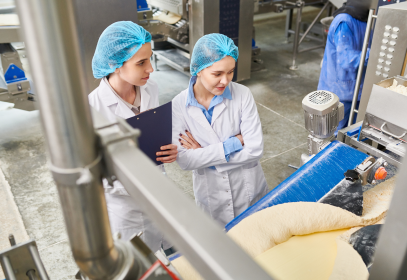
Episode 3: Monitoring Allergens in Operation
Episode 3: Monitoring Allergens in Operation
Allergens
In Kellerman Consulting’s third episode of the Allergen series, we are going to look at the main ways that allergen verification is achieved for a valid allergen control program.
The first verification activity is the allergen assessment in the facility. This is a practice that should be done by all facilities, regardless of whether they determine themselves to be low risk, medium risk or high risk.
In our last episode we discussed locating and labeling allergens in the facility, as well as assessing eating areas and vending machines for allergens.
We need to take those assessments and check that allergens assessed previously are up to date and accurate, and we need to perform this check a minimum of annually.
When performing the allergen assessment for the facility, we should break down the facility into GMP areas, including sampling areas, and non-GMP areas. We need to assess the status of allergens in the food we handle or process, and confirm the schedule build in operations.
This means checking the vertical storage practices of allergens to ensure allergens are not stored over ingredients which do not contain like allergens, and checking to ensure storage does not pose a risk to ingredients.
We also need to examine pre-operative inspections for allergens and label check practices for allergens to make sure those are up to date and accurate to practices in the facility.
Where assessments for allergens should be performed for facilities of all risk levels, for facilities with medium and high risk designations there are additional activities that need to be performed.
One of those primary responsibilities for facilities with a medium or high risk for allergens is to assess the production schedule for control of allergens each day of operations.
We should be building from the fewest number of allergens in the early production run on the line to the products with the most allergens, always going from like allergen to like allergen in products.
Production schedules, even when reviewed as part of production meetings, should be signed or initiated and dated each day by a responsible employee that did not write the schedule.
There are several novel approaches for allergen control verification, but two of the most commonly used options for allergens come in two forms, allergen swabs and allergen test kits.
Where the facility chooses to purchase and use allergen swabs or allergen test kits, documented procedures explaining how these activities are conducted, who performs these activities and who verifies them should be in place.
Those written procedures should also include what to do if there is a deviation as a result of a positive test for an allergen, as well as where testing was not performed correctly.
Additionally, it is very important that all employees responsible for using this equipment have documented training on proper utilization of the swabs and/or kits, as well as yearly assessments of swabbing or testing activities to confirm that folks are performing those tests correctly.
In our next episode, we are going to look closer at the FDA preventive controls requirements for allergens, as well as the FSIS requirements for allergen control in meat and poultry facilities.
Thank you for watching. For free downloads to accompany this video series, visit the free training videos & resources page of our website.
Subscribe to our YouTube channel or follow us on LinkedIn to be notified of new educational food safety resources.







